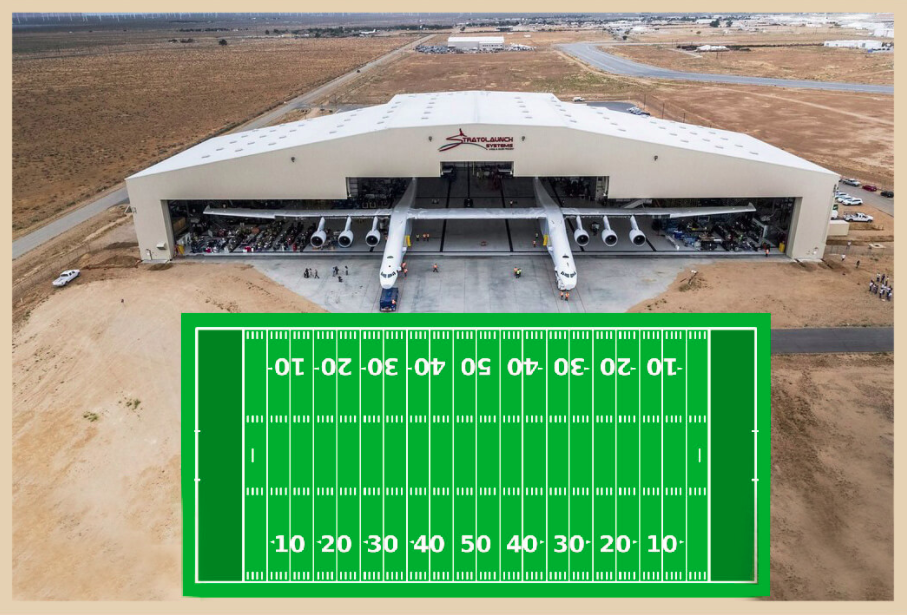Question Your World: Why Make the World's Biggest Plane?
Recently there was some big news in the science world, really big. Every now and then, scientists work on something so big that it catches a lot of attention for its size alone. If a big new innovation also happens to serve a game-changing purpose, then it becomes even cooler! That's exactly what today's story is all about. To begin the story, we must start with a really big question. Why make the world's biggest plane?
On April 13, the Stratolaunch plane made its debut flight from the Mojave space port, thus officially making it the largest plane to ever fly! Sure, there have been some pretty big planes in the past, one of the most famous being the Spruce goose with a 320-foot wingspan, but this one is even bigger!
To get into the size of the plane, we'll leave behind the simple metric measurements and go to a mind-blowing size comparison. The 385-foot wingspan is interesting, but let's put it into context. The giant Stratolaunch plane would stretch across an entire football field including the end zones. For you Washington football fans, end zones are where teams go to score points. Anyway, unlike other big planes that were created for transatlantic transportation or luxury, this one has a completely different purpose. The goal of Stratolaunch is to create a cheaper way to get small satellites into orbit.

As technology has advanced, the size of satellites has become smaller and smaller. Keep in mind that not too long ago, a computer only came in desktop sizes. As technology advanced, we had laptops and now we have smartphones, fully functional computers that fit in our pockets. Satellite technology is following a similar trajectory, some of them are getting smaller as well. Some orbiting satellites are about the size of a microwave. Launching them from higher in the atmosphere could be a more efficient and cost-effective way to get smaller satellites into orbit when compared to the traditional vertical launch from the ground.
So how would it even work?
This plane would carry a small rocket up to a high altitude, where the rocket would be released and dropped, then, once clear of the plane, it would launch itself into space... saving tremendous amounts of rocket fuel. Stratolaunch would then return to Earth ready to be reused for future launches, rather than being discarded in the ocean like most rocket boosters.
As more competition grows in the commercial space flight industry, ideas like these are becoming more commonplace. This was just a two-and-a-half-hour test flight, so much more testing is needed before planes like these start flying regularly. The big question now is - will this be the future of launching small satellites into orbit? That's hard to say. We don’t know quite yet, but the Stratolaunch team certainly thinks this technology is taking off!


